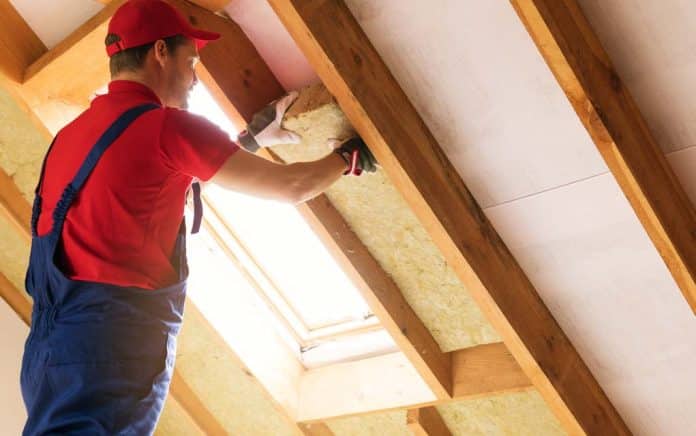
(FinancialHealth.net) – One of the cornerstones of a healthy financial lifestyle is saving money on home expenses. Ensuring your home is energy efficient throughout the entire year is a great way to save money on your utility bills.
Let’s take a look at the different insulation types you can use in your home.
How Insulation Works:
Insulation helps your home maintain a consistent temperature as outside weather fluctuates from hot to cold. A properly insulated home will help your HVAC system by boosting energy efficiency.
Insulation is measured by R-value, or the amount of thermal resistance as heat transfers from one side to the other. R-value is based on thickness, material and density. The base range varies and is listed on each individual insulation product.The higher the R-value, the greater the insulating capability.
SPF Spray Foam
Do you have a well-insulated home with just a couple of drafty spots? SPF or spray foam insulation may be a great option. There are two types:
- Open cell — a low density foam with an R-value between 3.5 and 3.6
- Closed cell — with a 6 to 6.5 r-value, it has a higher density barrier and retains heat much better than open cell
Spray foam is used to fill in small open spaces where air is escaping, like jambs and cracks around windows. This type of insulation can also be used for larger jobs. Call in the pros to use spray foam to insulate your attic, floorboards or walls.
Rolled or Batt Insulation
Part of most new home construction and remodeling projects is making sure the floors, ceilings and walls are insulated properly. A building standard, for both new homes and remodeling projects, is fiberglass insulation.
There are two main styles, both cost effective and easy to install. The rolled style comes in a long coil and can be cut to fit at the work site, and batt is pre-cut or pre-sized for installation in framed areas.
Blown-in Insulation
Blown insulation is a great choice for larger areas and can also be used in both new construction and remodeling projects. Blown-in insulation is made with either cellulose or fiberglass. Using a blower and hopper, small insulation particles are forced into the spaces inside walls, ceilings and attic areas.
Weatherproofing Can Help, Too
Already have a well-insulated home? There are some small tweaks that can be made to boost energy efficiency even more:
- Install weatherstripping around drafty windows
- Insulate electrical outlets
- Add plastic window seals to existing single-pane windows for added protection during the winter months
- Install a programmable thermostat to better control your HVAC unit and save up to 15 percent annually
- Install new energy efficient doors and windows
- Slashing energy costs is important year round, not just in the winter. Making sure the house is properly insulated and tightening up drafty spots can make a huge difference to your bottom line.
~Here’s to Your Financial Health!
Copyright 2020, FinancialHealth.net





















